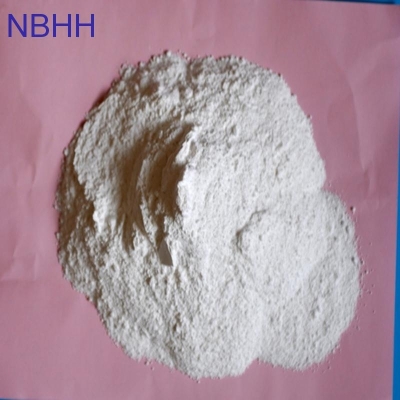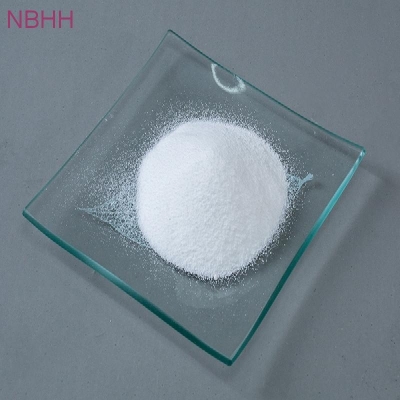Research progress of sweeteners in preserved fruits
-
Last Update: 2007-05-23
-
Source: Internet
-
Author: User
Search more information of high quality chemicals, good prices and reliable suppliers, visit
www.echemi.com
Sugar is the application model in the production of cold fruit preserves Sweetness and sour taste are the basis of food flavor The production of cold fruit preserves is inseparable from sugar, especially in low sugar preserves The commonly used low sugar preserves technology links: sugar solution deployment → boiling and sugar permeation → atmospheric pressure sugar stain → vacuum sugar permeation → drying treatment → surface moisturizing Low molasses preserves often appear the phenomenon of tissue softening, browning, morphological shrinkage and moisture absorption However, in the process of product sugar boiling, using the high permeability of sucrose, the multiple boiling method (3 times) is used to improve the sugar concentration After hot pressing and soaking, sucrose is evenly and fully infiltrated, that is to say, the flavor and texture of cold fruit are improved by the high permeability of sucrose It can not be replaced by artificial sweeteners Sucrose is the regulator and puffer of the structure of preserved fruits At the same time, there are hidden dangers in food safety for preserved fruits with water activity over 0.80% Adding 55% - 70% sucrose solution can dehydrate microbial cells, inhibit the growth of mold, bacteria and yeast, and prolong the shelf life In addition, the quality control of beverage and canned sugar water products is to regulate the sugar content in the solution The concentration of cold fruit in boiling sugar and soaking is also based on this However, from the perspective of nutritional and dietary balance, high sucrose is not conducive to high blood lipid and other three high population In addition, in recent years, the price of sugar keeps rising, and the price of sugar in the province is up to 4800 yuan / T, and saccharin sodium, sodium cyclamate, acesulfame and aspartame are used as traditional sweeteners in the production of cold fruits These factors impact the position of sucrose in the market of cold fruit preserves Of course, food safety should not be ignored, especially for some potentially harmful additives, such as saccharin sodium, which is used in excess of quantity and scope The health risk of abuse is chromosomal abnormality and bladder cancer Up to now, the food safety image of high power sweeteners is very poor due to the incidents of cold fruit preserves, especially the excessive sulfur dioxide, the abuse of saccharin sodium, AK sugar, proteoglycan and other sweeteners For example, saccharin sodium is controversial If saccharin sodium is used alone, only the food with poor flavor and texture can be obtained, especially the illegal abuse of some manufacturers However, it should be noted that the state strengthens the supervision of preserved fruits to prevent risks In 1988, the hygienic standard of preserver (gb8956-1988) was issued in China, which was revised as good production standard of preserver enterprises (gb8956-2003) in 2003, and the general principles of preserver food (gb10782-1989) in 1989 In 2003, the standard of preserver food was revised (gb14884-2003), and the food additives in preserver were clearly regulated In particular, sodium saccharin has low cost and high sweetness National regulations can be used in 9 kinds of food and soda According to FAO / who, the maximum daily intake ADI is 2.5mg/kg body weight Saccharin sodium is used in pickles / sauces / concentrated juice / preserves / prepared wine / cold drinks / pastries / biscuits / complexion, with a maximum limit of 0.08-0.15g/kg (gb2760-1986) With the expansion of the market of low sugar and sugar preserved cold fruits, the market demands more and more on the flavor and texture of cold fruits For example, the market recognizes that the odor concealing function is more important than its inherent palatability, and cannot ignore the other effects of high-power sweeteners For example, sugar preserved cold fruits added with sodium cyclamate have the characteristics of being non sticky and non hygroscopic, while sucrose cannot In addition to the safety, it should also be used reasonably For all high sweetness sweeteners, the effect of high sweetness sweetener at low concentration is much better than that at high concentration The synergistic effect of sweeteners can be used to mix various long and short effect sweeteners, which can improve flavor, reduce cost and improve safety Sodium and calcium salts of cyclamate (the chemical component of cyclohexylsulfonic acid) are used together with saccharin When the ratio is 10:1, the effect of flavor improvement is better It should be noted that the FDA prohibits the use of cyclamate; when fructose and saccharin are mixed, the effect of sweetening multiplication is increased, and there is no synergistic effect between AK sugar and saccharin sodium The combination of saccharin and aspartame has synergistic effect on each other, which overcomes the aftertaste of saccharin and improves the stability of aspartame The synergistic effect of saccharin and neonaringin dihydrochalcone can increase the sweetness effect by nearly 40% compared with the theoretical maximum value When sucrose is applied, it has functions other than sweetness The added amount is large, which leads to too high sweetness, and fetters the release of other flavors to produce unpleasant taste Sweetness inhibitors reduce the sweetness compounds of sugary foods through sweetness receptors Yeetame is a triterpene glycoside in China Therefore, it is suitable to use effective sweeteners (such as saccharin, cyclamate, aspartame) to improve the taste and reduce the sweetness On the other hand, for the preserved fruit, in addition to the renewal of process formula on the sugar and salt semi-finished products, the improvement of microwave sterilization method and vacuum packaging technology, there are also ideas of equipment selection and large-scale improvement It is also feasible to find the substitute of sweetener At present, the biological characteristics of agricultural products, especially the physiological and biochemical characteristics of plant cells, the research of plant glycoprotein, and the improvement of separation technology, have found sweet protein and orthopedic protein with higher sweetness For example, thaumatine comes from the fake skin of African bamboo pole fruit, with a sweetness of 3000-4000 times of sucrose; monellin, mabilin and miraculin, whose sweet mechanism and structure have been understood, but there is still a long way to go in terms of low cost and safety It is believed that with the increasing demand for low calorie food and the continuous improvement of the quality requirements for preserved fruits, the market is more heated to hold sweeteners that meet the requirements of the production of preserved fruits in terms of cost, flavor and safety For example, it is known as the most promising new sugar source stevioside, which is 300 times sweeter than sucrose It has been widely used in the food industry to produce foods with high sweetness, low calorie, low salt and anti caries Because it has obvious pharmacological function and auxiliary effect on diabetes, obesity, heart disease and hypertension, it is not easy to ferment food and has antiseptic effect, so stevioside before development Jing Ming long Neonaringin, a sweetener extracted from pomelo peel, neohesperidindihyde rochalcone, is 3-5 times sweeter than saccharin and 2000 times sweeter than sucrose There is also Glycyrrhiza Glycyrrhiza, a natural sweetener commonly used in traditional Chinese medicine, which is composed of glycyrrhizic acid According to Japanese reports, the sweetener still has a sweetness when diluted 400 times, and the sweetness is 200 times that of sucrose, and the test has passed the toxicity test.
This article is an English version of an article which is originally in the Chinese language on echemi.com and is provided for information purposes only.
This website makes no representation or warranty of any kind, either expressed or implied, as to the accuracy, completeness ownership or reliability of
the article or any translations thereof. If you have any concerns or complaints relating to the article, please send an email, providing a detailed
description of the concern or complaint, to
service@echemi.com. A staff member will contact you within 5 working days. Once verified, infringing content
will be removed immediately.







